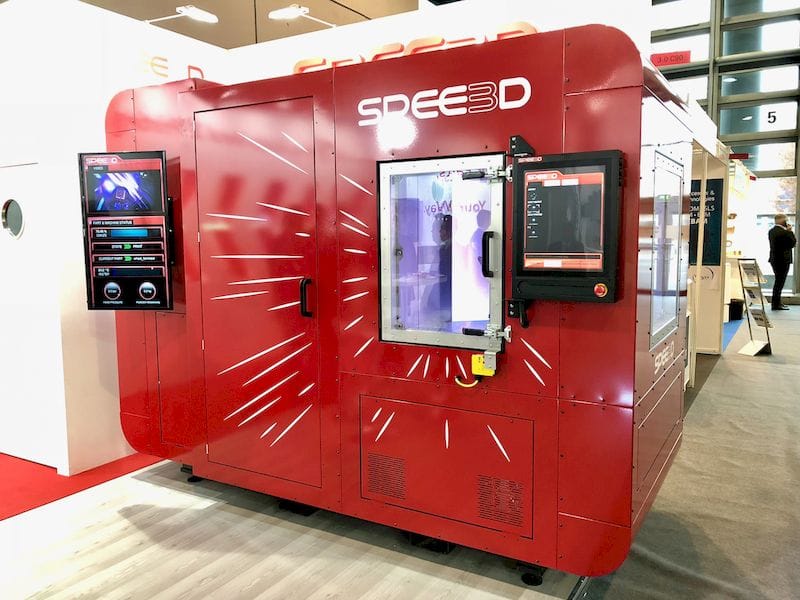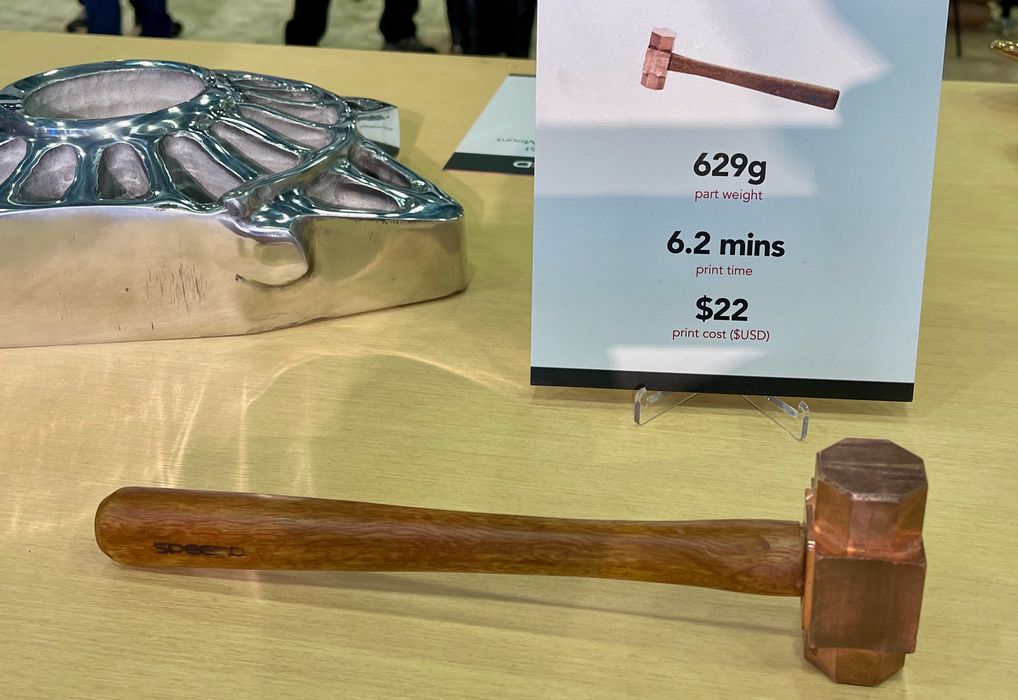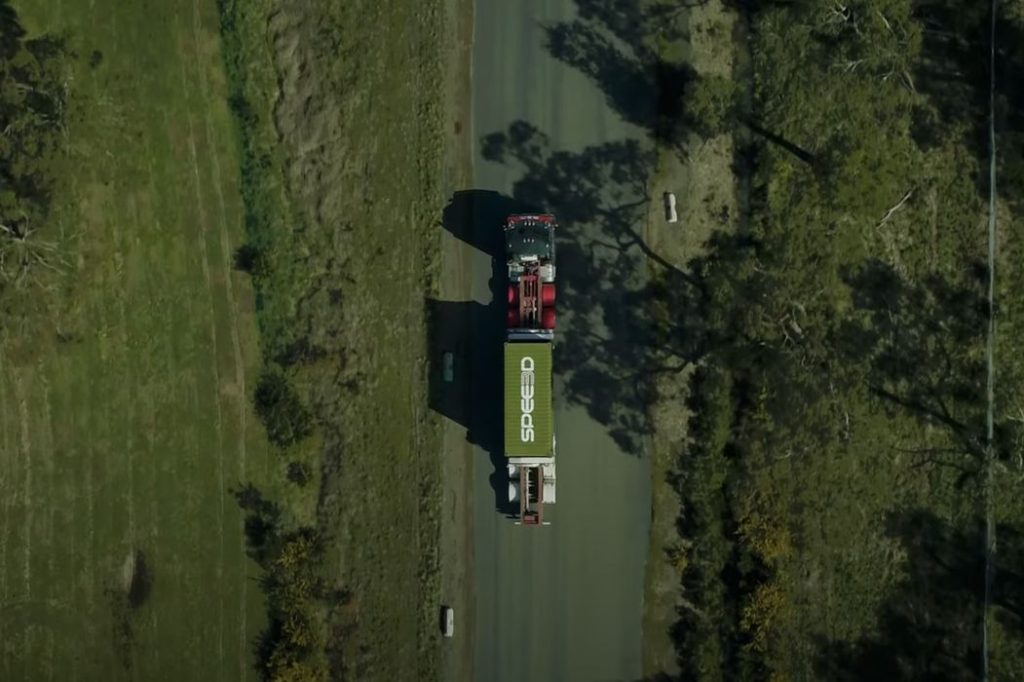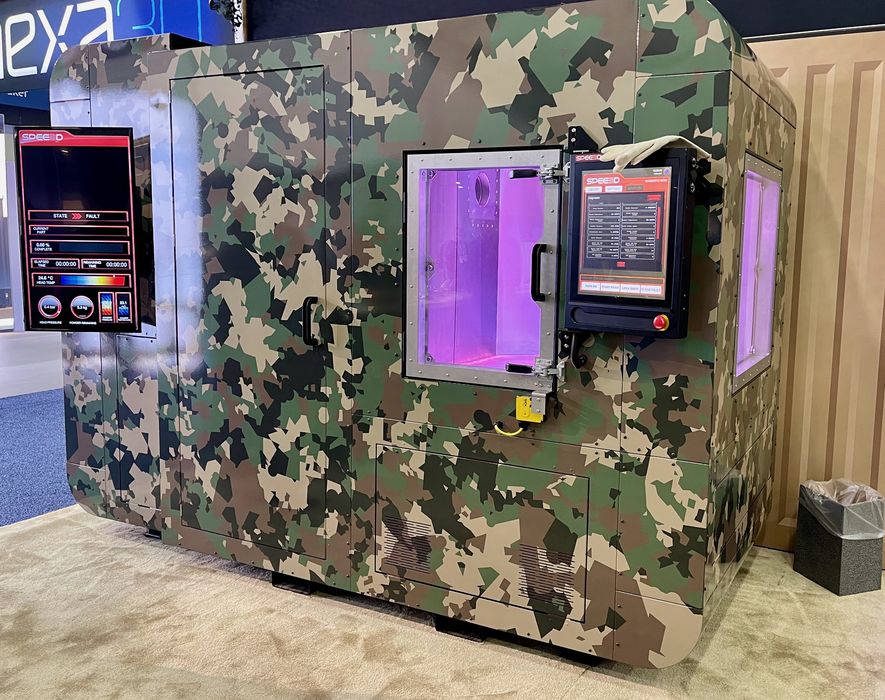
Something very interesting is happening at SPEE3D.
The Australian company produces a unique 3D printer that uses supersonic technology to print metal objects. In their process, fine metal powder is blasted at a target at literally supersonic speeds, and the impact causes instantaneous molecular fusion. By moving the print head around it is possible to very quickly build large metal objects.

In fact, one of their demonstrations involved printing a 629g hammer in copper metal in only 372 SECONDS!
The system is straightforward to implement and operate, and is resistant to gravity effects that would spoil prints using the LPBF or EBM processes.

That capability led SPEE3D to develop a kind of “mobile” version of their 3D printer, installed in a standard shipping container. This meant it was possible to drop a mini-manufacturing site in remote locations and begin making big metal parts immediately.
That attracted the interest of the military, as that capability could be quite useful in certain situations. SPEE3D worked with the Australian military, and later we learned they had been working with the US Navy. That partnership led to a unique installation of a metal 3D printer on a navy ship.
This week we learned that SPEE3D has now partnered with yet another military, this time the British Army. The arrangement is to focus on use of the supersonic printing tech to perform unplanned repair activities during a two-year contract.
SPEE3D explains:
“When examining additive manufacturing solutions, defence requires technology that can quickly produce parts from well-known metal alloys to address real-time needs and in the field where forces are typically located. XSPEE3D is a leading solution in the market that addresses these requirements. The printer is fully transportable as a standard shipping container with the printer and all auxiliary equipment in one box and provides on-demand manufacturing, critical for deployed troops maximizing availability and minimizing downtime. Parts are finished in hours instead of days, can be made for any vehicle and platform, and are manufactured in various metals, including aluminum 6061, aluminum bronze, and copper.”

SPEE3D has been focusing on the military market for some time, even “camouflaging” their machine at a public event, as seen here.
You know the old saying from Scotty from Star Trek TOS, “Fool me once, shame on you. Fool me twice, shame on me.” Here we have not two, but THREE militaries delving into SPEE3D’s tech.
That’s a pattern.
And it’s a pattern I’ve seen before. Typically industries tend not to engage with new tech because they don’t want to upset current processes. Because of this it has been incredibly challenging for companies with new 3D print technology to break into new markets.
Countless dollars have been spent trying to persuade industries, and occasionally, it works. Today we see the automotive, dental and aerospace industries truly embracing the technology in big ways.
But before that happened one player in each industry had to try it, and succeed. Once someone in an industry gets on the tech, others begin to follow because they don’t want to get left behind, and their eyes are opened to possibilities demonstrated by others they trust in the same industry.
That appears to be what is happening here with SPEE3D’s latest deal with the military. Three different militaries all testing this technology? That could indicate the start of something much bigger to come.
Via SPEE3D
